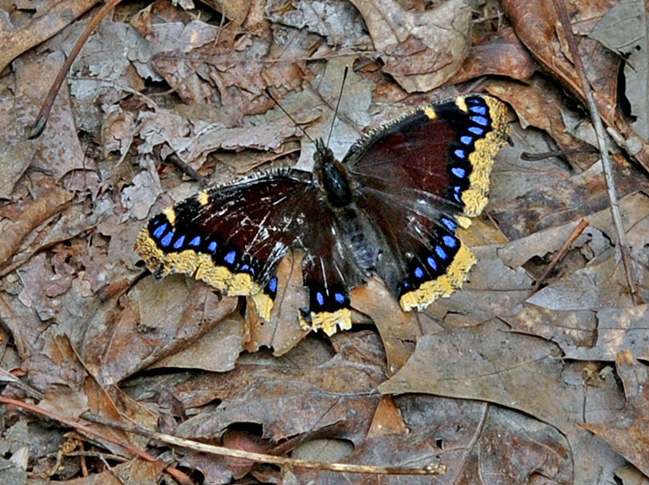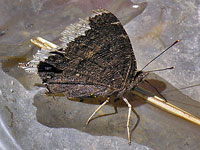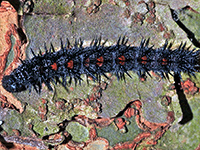
 |
Photos © Kim Hosen Above - Merrimac Farm Wildlife Management Area; June 2009 Left - Merrimac Farm; April 2007 |
Mourning Cloak This large, dark maroon butterfly is easily identified by its angled yellow wing borders. One of the earliest butterflies to be seen each spring, the Mourning Cloak spends the winter in the adult form and aestivates during the warm summer months. Look for the Mourning Cloak between early April through June and again in the fall, during September and October. You can find Mourning Cloaks in a variety of habitats, from the suburbs to deciduous woodlands. Males perch on low branches or the ground, awaiting females, and often patrol along trails and open areas with an erratic and circling flight pattern. The Mourning Cloak prefers to feed on tree sap and rotting fruit, less often on nectar. They lay white eggs in ring on the twigs of host trees, usually black willows (Salix nigra) and weeping willows (Salix babylonica). |







